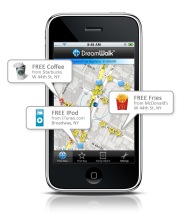
by Alex Repola
Up until just a few years ago, very few people knew what
Search Engine Optimization (SEO) was. Up until even a year ago, people that had heard of
SEO didn’t even know what it meant.
Seogon Technologies, a Denver based
SEO and
Internet marketing company, has spent the last year changing the way businesses reach out to prospective clients through the World Wide Web. With nearly a decade of
Internet marketing experience in various industries, co-owner Stephen Christopher prides himself on ethical business practices and customer service when designing marketing campaigns for organizations. I have worked with Stephen on many occasions and have learned there are right ways of doing
SEO and there are wrong ways;
Seogon Technologies takes those extra steps to ensure complete customer satisfactions through ethical business practices.
Q: Tell me a little about yourself, Stephen.A: I grew up right on the water in Pensacola, FL; went to school at the University of Florida, home of the Gators; excited that the Denver Broncos picked up Tim Tebow. I fished a lot growing up and enjoy being outdoors camping and sitting by the pool since its summer.
Q: What past experiences and knowledge led you to Seogon Technologies?A: In 2003-2004, when
SEO really started to hit the market, I co-owned a mortgage company for real estate investors. We had a really great website and a ton of clients but couldn’t figure out how to get people to find the site, specifically, new customers. We started to do some research and found this thing called
SEO. We Google-ed it and saw how cool this tool really was. People find you; there are ways to move up pages on Google for specific terms. It’s great. At this point in time, in 2004, a lot of people didn’t know much about
SEO. Even today, a lot of people really don’t know what
SEO is or that it even exists. If they have heard the term before, they generally attribute it to the Internet. Rarely do they know what it actually does. We realized we needed to be found for these specific terms that we were marketing for within the mortgage industry. We ended up hiring this one guy that worked out of his basement and he did a few things to our site in regards to optimization. I watched him for a month or two and started to pick up on it; I noticed how many things this guy was missing. I started to learn more and more about
SEO and we shot up to the first page of Google for terms like ‘investment property mortgage’ and ‘income property mortgage’ after some time. We were beating out companies like Wells Fargo, Countrywide, and other big-name organizations. We did great for a couple years then the whole mortgage industry bottomed out.
That’s where I gained the majority of my
SEO training. I then went into the data recovery industry and did
SEO; I knew what I was doing, which was more than most people in the
SEO industry. Studying new
SEO trends, testing it, implementing it, and figuring out which word should be bold or italicized and how that impacts results. A number of my colleagues started to ask me to optimize their sites on the side, I began to see a niche for
SEO and no one was doing it correctly.
Q: What is the premise of Search Engine Optimization?A: It can be defined as being able to manipulate the rankings in an honest way, promoting your business or a client’s business online. That’s it in a nutshell; it’s not a difficult concept to grasp. Raising your organic ratings for certain key words or key phrases is all it is.
Q: Can you elaborate on why it’s so important to perform SEO in an ethical manor?A: There are a lot of unethical
SEO companies out there; we happily take business away from these companies every chance we get. They are doing the industry a disservice by overpromising and under delivering. These types of companies will get you blacklisted on all the search engines, Google being the first that picks up on unethical practices. Once you are blacklisted, you have to manually submit request to Google to be removed from this list. Generally, we’re able to submit a letter saying we’re a new company handling
SEO, hand them the revised code, and hope we can get things back on track. There is a correct way to do things, a right way to do things, and if it’s not followed, there are repercussions.
Q: What search engines are seeing the majority of internet traffic these days?A: Google, Yahoo, and Bing (formerly MSN) are really the top three search engines that get the most traffic.
Q: If you aren’t ranking well on these sites, what does that mean?A: It can mean one of two things; one, your site is not built correctly and/or being optimized incorrectly. Two, you did something unethical and you’re not showing up because you’ve been blacklisted.
Q: What is the correlation between keywords and content? A: Search engines are looking for relevancy. For example, if
QeH2 wants to come up for ‘
I.T. Support Denver,’ that would be your keyword.
QeH2 wants to make sure the search engines can read through their site site, find plenty of relevant content that helps them get found for ‘
I.T. Support Denver.’
QeH2 doesn’t have to have massive amounts of text, but the site does need to have a decent amount of content so search engines can see how relevant the site is for those key words.
Q: Is all the SEO done on your client’s, site or do you use other outside resources to help optimize?A: There are two broad areas for
SEO; onsite optimization, where everything is done to a customer’s physical website; things like
Meta tags, making sure content is spread properly throughout the site and ties to the keyword strategy.
Onsite optimization accounts for about 20-30% of
SEO rankings with search engines. Onsite optimization helps, but it may take 6-8 months to show up for certain keywords, and that’s only if they are non-competitive keywords. The other 70-80% of
SEO is offsite optimization. These are things done out on the internet, or on other sites. You may have heard the term ‘
link building’, which can be described as a popularity contest.
The more popular your website is, the higher you are going to show up on search results; links, referrals, anything that has a description about your site on someone else’s site is very helpful. Go do that a couple hundred times and that’s great for optimization. This is where the meat of
SEO takes place. With link building, it makes a difference as to what site you’re linked to. If you have a link on Amazon.com, one of the largest websites out there, it’s going to hold a lot more value than 100 links on 100 no names sites. If you are linking to a blacklisted site, it’s only going to hurt your rankings.
Q: What are the benefits of Seogon Technologies SEO services?A: We separate ourselves from our competition with our customer service and level of communication. A lot of companies say they focus on these aspects of business, but they really don’t. We have the referrals from clients that stand by the work we’ve performed. When we bring on a new client for
SEO, we give weekly updates for the first 60-90 days. We are constantly communicating with the client what we are doing, what the next steps are, and even things we need from the client.
Professional SEO is a very interactive process; we need participation from our clients. Outside of that reporting, we do a monthly tracking report update which includes a detailed written explanation of each aspect of
Seogon Technologies' work. Too many times
SEO and marketing companies will just hand you these large reports and expect you to decipher what it means. This is integral in assisting our clients with seeing the areas there has been movement and growth.
Q: With a lot of small to medium sized businesses turning to the internet to drum up business, are you seeing more business owners shifting towards helpful tools like search engine optimization?A: There is a huge increase in the number of people that are learning about
SEO, learning more about how it can help business, and starting to realize that it’s more beneficial to spend $2000 on
professional SEO a month than $4000 in Yellow Pages pay-per-clicks. A couple of years ago, and even up to a few months ago, it wasn’t that uncommon for businesses to spend four sometimes five thousand dollars on Yellow Pages; that’s just not where online advertising is anymore.
SEO lets the consumer find you for the specific product they are looking for. Lots of companies are starting to realize that they desperately need it. We are getting more calls now than this time last year of people asking questions and educating themselves on how
professional SEO can help them.
Q: Where did you first hear of QeH2?
A: I heard about
QeH2 through two different sources right around the same time. A close friend of mine mentioned
Seogon Technologies and
QeH2 as having very similar business models in the same industry. Not a week later, I was in a friend’s office and
QeH2 was onsite providing
I.T. support in Denver. I asked my friend about
QeH2 and he had only great things to say. I called Eric Pratt, Director of Sales & Marketing, right after and we got together and talked. It’s all history from there.
Q: What is something that really sticks out about QeH2’s model and how they conduct business?A: QeH2’s level of customer service really stands out to me. The ability to live and work in a technology-based industry and communicate with people outside the
information technology industry is a skill that so few people and so few companies can do. Your entire staff can communicate on different levels depending on who they are talking to.
I.T. support and providing solutions is no different than
SEO. There are a lot of people that are good at it, but there are also a lot of pieces that need to be in place to be a successful company. I have heard only good things from your clients.
Q:What do you see the future partnership between Seogon Technologies and QeH2 looking like?A: I see you guys getting a lot more leads through the
QeH2 website. Our services perfectly complement each other. It will be a long-lasting partnership where we can continue to grow businesses within
I.T. and
SEO.






 by
by 


































